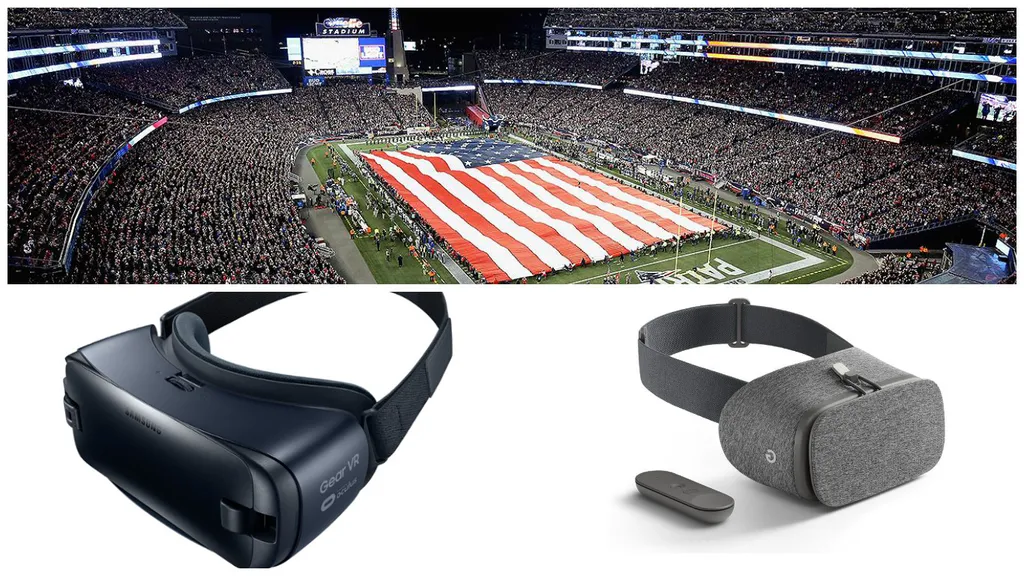Sporting events have been some of the highest profile paths into the hands of casual VR and 360-media adopters. As a result, significant partnerships with the NBA, NCAA, NFL, and others have sprouted up from interest in the platforms. While some have leaped in headfirst, the NFL is a bit more hesitant and only has documentary style and highlight packages available in the 360-degree format.
Digital Trends spoke with the NFL’s Director of Media Strategy and Business Development, William Deng, along with representatives for Voke and NextVR, about current pitfalls of live streaming, what we could see in the future, and the hesitation to fully integrate with VR.
While PC-based VR headsets provide the high-quality visual experiences that sporting events need, those options are far from being the most accessible and that’s something the NFL understands. Thus, mobile headsets are the main focus for live-streaming with Deng even going so far as to say NFL’s investment in VR is “heavily reliant on the mobile phone industry”. Unfortunately, the picture these headsets produce is a concern for Deng. “When I’m in the headset and I’m watching content or a highlight on the other side of the field, can I actually see what’s happening? Resolution today limits that ability,” he says. Jayaram of Voke also noted that, while they can capture 4K content, not many smart phones are equipped with 4K displays. When it comes to future improvements, NextVR co-founder Dave Cole points out that new panels and the Snapdragon 835 mobile chipset in Japan would be beneficial. “You won’t be able to build a bad Android VR phone, because all of the components supply will be specific to making a great VR device,” he says.
While the limitations of the mobile platform is an important obstacle, it’s not the only one. In 360-degree video, content creators have found ways to direct the users eyes in the right direction with smart structure and clever design. With live events, producers don’t have that luxury. “What’s the right balance between giving our viewers the flexibility to take advantage of this medium, and be able to access this game from different vantage points, but at the same time making sure the story-line around the game is still coming through,” Deng asks.
He also asks how one would make sure users are focusing in on where the action is happening on the field, which seems like a strange concern when the answer lies right inside football stadiums. While in attendance at a big game, even when sitting a good bit away from the action, fans that want a focused look on the action have massive screens they can look at in addition to the live action. If you want precision of live broadcasts in a live 360-degree stream, why not overlay footage from the static cameras with the free flowing 360 cameras? When it comes to a story-line, fans can enjoy the event and seek out more structured content immediately post-game just like with traditional viewing.
Replicating the ambiance and excitement of live sporting events is another element the NFL, NextVR, and Voke want to perfect and, as the technology grows, end-to-end solutions should become more possible. Despite the setbacks, the NFL seems to be invested.
“I think that we’re seeing the NFL recognizing that VR is going to be a significant part of their digital subscription media strategy,” Cole elaborates. “They’ve basically said that with the tests they’ve done and the work they’ve done with us.” Maybe a major mobile leap in capability happens in 2017 that inspires NFL to speed up their integration, but we’ll all have to wait and see for now.





























